An unusual plant resembling a palm tree is the pride of many gardeners. However, not all people dare to plant such a culture, believing that it is too capricious. In fact, this is not at all the case. In our article, we want to talk about what yucca is and how to care for it.
Homeland of culture
What is yucca? This is an evergreen plant, a plant that has taken root well throughout Russia. Yucca is native to America and India. The plant belongs to the asparagus. It looks like a Mediterranean agave.
Home forms of representatives of this family have a strongly developed stem. But yucca growing in open ground does not have a stem. The sockets are firmly pressed to the ground. The peduncles of the culture are panicle-shaped. The flowers are in the form of bells, lowered down. Peduncles grow from the center of the rosette, reaching a height of 1.5-3 meters.
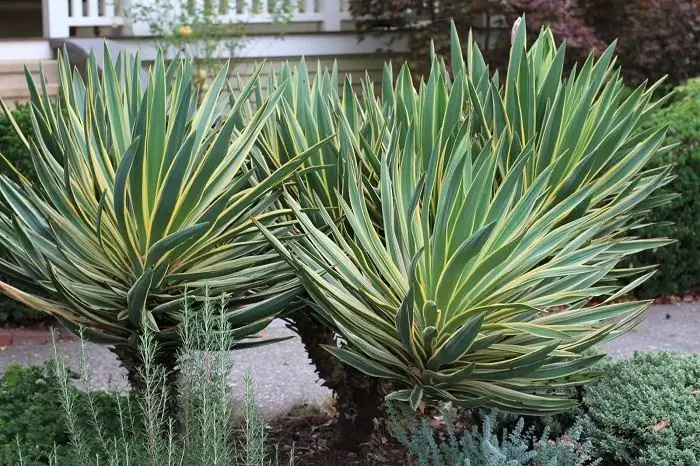
What is yucca? This is an exotic plant that has long taken root in our areas. In the homeland of culture, it is grown on huge plantations. The stems of the culture are usedfor the production of the famous tequila.
The exotic appearance of the plant, at first glance, suggests a comfortable growth of yucca in the tropics and subtropics of America. However, natural places are by no means the most comfortable for culture. Yucca is adapted to long periods of drought. And also to sudden temperature changes. Such endurance allowed the culture to spread from the southern regions to the middle strip of the continents.
In Russia, the plant first appeared over a hundred years ago. What is yucca, in those days no one knew. Only parks and gardens at famous palaces could boast of an exotic plant. Now the culture is so widespread that it can be found in almost every household plot.
Flowers of culture
Yukka flowers bloom on a tall tree-like stem with sharp leaves. The Indians have long called culture the tree of life. The flowers of the plant are cream or white. Their aroma is very pleasant and intense. It is worth noting that the plant blooms only at night.

And you can get its fruits only in conditions of wild growth. This is due to the fact that only a certain type of butterfly pollinates the culture, which are not present in temperate climates. Yucca fruit resembles a large fleshy berry.
Plant energy
Yukka is known as the tree of happiness. It is believed that culture brings good luck and prosperity to the house. The decorativeness of the plant allows it to be widely used for decorating plots and apartments. And hereastrologers do not advise growing culture in a room, believing that it brings contention to the house. They believe that yucca can only be considered as an office plant. A pot of culture near the entrance to the service area will help protect it from the entry of evil forces.
Types of yucca
In nature, there are more than 40 varieties of yucca. Among them there are real giants, reaching a height of 7-8 meters. Others, on the contrary, are more modest in size.
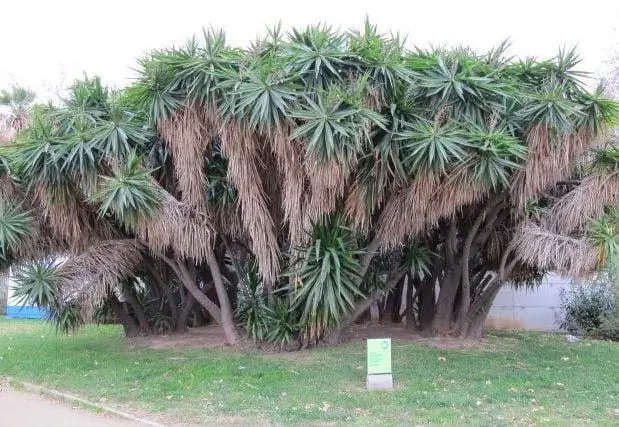
Varieties differ in location, flower size, leaves and other details:
- Yukka gray. It grows on the west coast of America. It reaches two meters in height. The foliage of the plant is green with a blue tint. Blooming panicle grows up to a meter.
- Yukka aloe. In nature, it is found even in Bermuda. This species grows very slowly, although old plants reach a height of eight meters. Young culture practically does not branch. She spends all her strength on the formation of the main trunk. Over time, the plant develops crowns located on the side trunks. Outwardly, the leaves of the culture resemble aloe, for which it got its name. The height of the inflorescence reaches 0.5 meters.
- Yucca filamentous filamentose. Bush culture, the leaves of which reach a length of 70 cm, and a width of 3-10 cm. There are threads on their edges, which is why the plant got its name. Peduncles of filamentous yucca reach a height of 2.5 meters. Culture, like its other types, is characterized by unpretentiousness andfrost resistance, thanks to which it can withstand temperatures down to -20 degrees.
- Yukka ivory got its name due to the similarity of the tree-like stem with the leg of elephants. A distinctive feature of the plant is a strong branching. The leaves of the culture reach a meter in length, forming a crown at the top. Externally, the plant is very similar to a tree. The plant blooms in summer. Despite the impressive size of the culture, the yucca panicle reaches a length of only one meter.
- Glorious Yucca. The plant is native to America. In nature, culture reaches two meters. It usually has a single stem.
- Tree or short-leaved yucca. It is sometimes called giant. The birthplace of culture is Arizona and the southern regions of California. Under natural conditions, it grows up to 9 meters, and the diameter of the trunk reaches 50 cm. At the crown, the plant usually branches, which makes it look like real trees. The tree form can only be grown outdoors as it requires a lot of space.
- Yukka Schidigera. The culture has a large outlet and long leaf plates. The plant blooms with white bells. This type of culture is used for the preparation of medicines in veterinary medicine and pharmacology. The substances contained in the plant have a beneficial effect on the immune system and the gastrointestinal tract.
Features of outdoor cultivation
Despite the unpretentiousness of the culture, it is worth knowing some of the features of its cultivation. In open ground, glorious, gray-gray and filamentous varieties are usually grown. Lasttolerates frost well in central Russia. The other two species are more often planted in warmer regions: in the Caucasus and in the Crimea. With its exotic appearance, the plant looks good in any area.
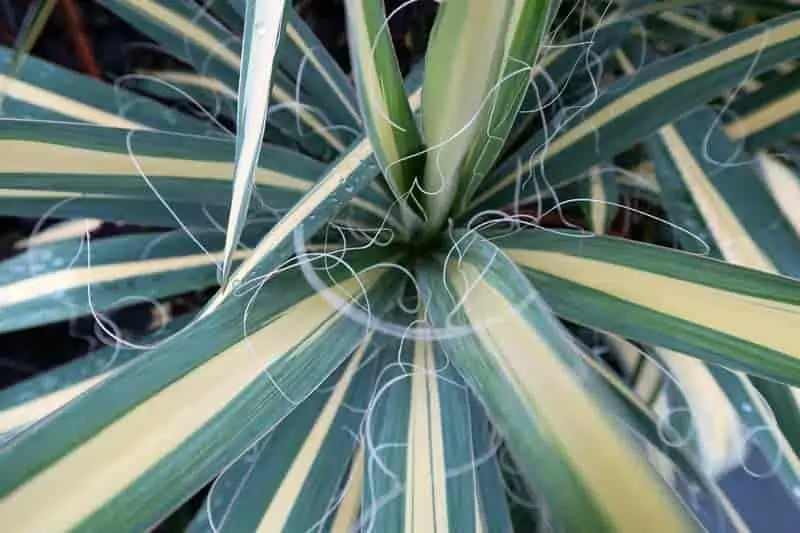
When planting yucca in open ground, you need to choose the right place. Then in the future the plant will not require much attention. The culture feels great in sunny areas, but in some cases it can grow in partial shade. The plant can be planted on slopes. But in the lowlands and in the shade it should not be placed, otherwise it will affect the appearance. Due to lack of lighting, yucca leaves turn yellow and become ugly.
Landing
Yucca is planted in open ground in the spring, even before the start of active growth, when the air temperature does not drop below +10 degrees. You can also land from mid-August to mid-September. Yucca is undemanding to the ground. It is good if the soil contains turf and leaf soil, sand and humus. But at the same time, the culture takes root in any soil.
If you plan to plant yucca on a site with clay or black earth, then you should add sand to the soil. And at the bottom of the pit, gravel should certainly be poured for drainage. A flower can grow in one place up to 15-20 years.
A plant feels good if its roots get enough oxygen and water does not stagnate near the roots. It is for this reason that it is very important to organize a drainage layer.
Dense leaves of the plant can injure hands, so it is better to use gloves.
Recommendations from gardeners
Experienced flower growers recommend not planting a plant immediately, but first digging it in, and then taking it out into the open air, gradually increasing the intervals of being outside. In the future, the bush can be planted in the country.
To do this, it is necessary to dig a hole in the area, the diameter of which should be twice the size of the root system. The plant is placed in the middle and covered with soil, tamped down so that there are no voids. From above, the bush is watered with a small amount of water.
Water and fertilize
Yucca must be watered carefully. Culture does not tolerate overflow. Excess moisture leads to rotting of the roots of the plant. But the lack of water also has a negative effect. Yucca leaves begin to curl. With proper watering, the foliage of the plant should be straightened.
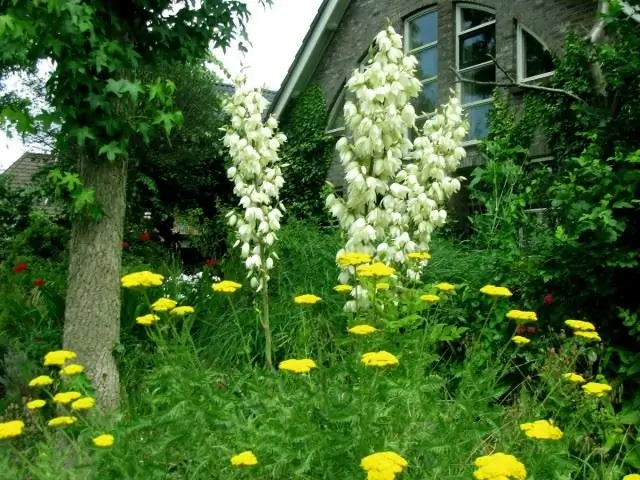
In the first few years, yucca can be fed with mineral fertilizers for succulents. You can make them in May and after flowering. After three years, the root system will be well developed, so it will be possible to make organic matter. Adult bushes must be fed with liquid fertilizers (organic). At the beginning of summer, a small handful of superphosphate is scattered around the trunk. After rain or watering, fertilizer enters the root system, stimulating further flowering.
How to plant yucca?
Shrubs are transplanted mainly in order to get new plants, since the culture can grow in one place for up to 15 years with good care. If necessary, yucca can betransplant before the age of three with minimal risk.
The plant has a large root system that grows up to 70 centimeters in length. Therefore, when transplanting, it is necessary to dig deep so as not to severely injure the roots. 15 days after planting, the plant can be fed with a complex mineral fertilizer. Blooming yucca in a new place can be admired no earlier than in a year.
The plant is transplanted in early spring or late August.
Reproduction
Yucca is propagated vegetatively and by seeds. Under natural conditions, butterflies pollinate plants, as a result of which fruits appear. But in our climate, such insects do not live.
It is worth noting that it is very difficult to grow a crop from seeds. The process is quite long and laborious. It is much easier and faster to get new plants by dividing the bush. Efficient and simple way is very convenient. When transplanting an existing plant, it is necessary to separate the shoots and plant them in a new place. Young bushes need more attention. They need to be watered more often and fertilized periodically. Plants are usually planted no more than once every three to four years.
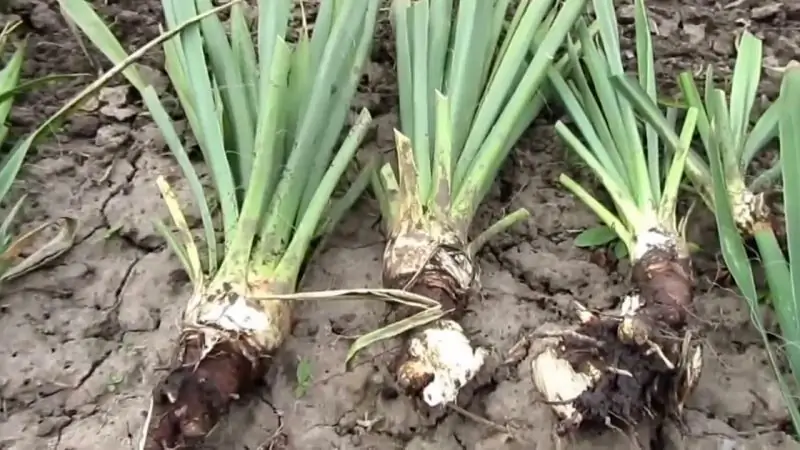
You can also propagate yucca by cuttings. The best time for this is spring. To obtain cuttings, apical shoots are used. It is worth remembering that for rooting it is necessary to use small shoots. The larger their size, the worse they take root.
The shoots are cut with a sharp knife, after which the slices are treated with activated charcoal and a littledry. Next, the cuttings are planted in moist soil at a distance of 3-4 centimeters from each other. Cover them with cling film on top. Cuttings take root faster in sandy soil. The soil must be constantly kept moist. After rooting, young plants can be planted in open ground.
Small bushes are left to winter in the greenhouse, covering them with insulation from above.
Preparing for the winter
Yukka garden is a hardy crop. It tolerates snow and cold well. The plant can tolerate a short-term drop in temperature to -15 degrees. But prolonged frosts are detrimental to the bushes. Young plants are especially susceptible to freezing. Therefore, it is recommended to properly prepare them before the onset of cold weather.
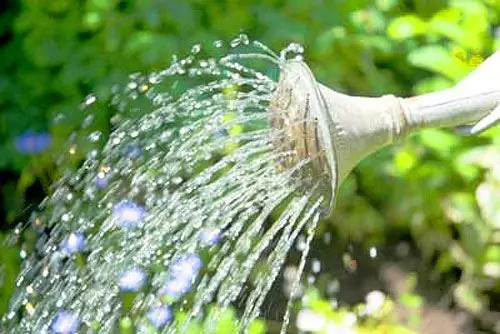
How to cover yucca for the winter? At the end of October, the leaves of the plant must be pressed against the trunk and tied with a rope along their entire length. This will protect the crown from freezing. From above, the flower must be wrapped with a dense cloth or agrofibre. Next, the bush is covered with dry leaves or grass. You can also use spruce branches or sawdust. From above, the shelter must be fixed so that the wind does not damage it.
Spring Care
With the advent of spring, before the onset of stable heat, snow must be removed, since young plants are sensitive to an excess of winter moisture. The shelter can be dismantled only after the positive temperature is established.
Diseases and pests
Culture is not too prone to disease. Yucca can be damaged by insects such as mealymealybug, whitefly, scale insect and spider mite. Preparations such as Actellik and Fitoverm help to cope with such pests.
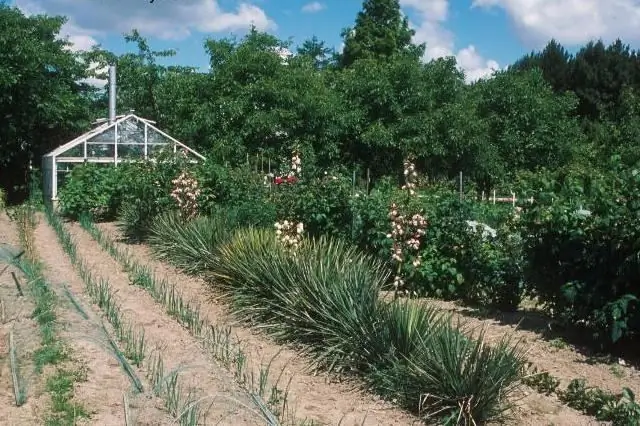
In conditions of high humidity and low temperatures, bushes can be affected by fungal diseases. In this case, brown spots appear on the foliage. Sometimes gardeners are faced with the fact that the yucca dries. There are several reasons for the drying of the foliage. Most often this is due to excessive waterlogging and rotting of the roots. Sometimes the root is so damaged that you have to cut off the top of the plant to root.
Light dry patches may also appear in strong light or drafts.






